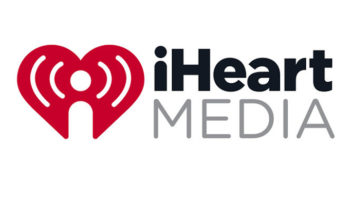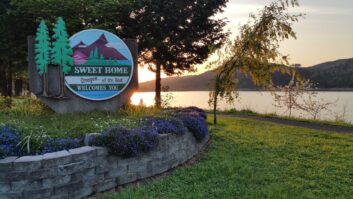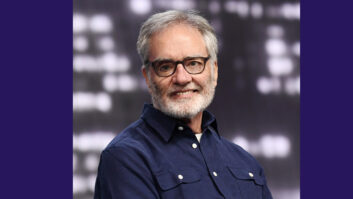There�s nothing like a brand-new studio to rally the masses.��
But it�s also interesting to revisit a newer studio that has been around long enough for the new shine to wear off � to see how the studios held up after the honeymoon phase, when the dust had long settled and the equipment had been bumped around a bit, and what lessons might have been learned.

Several representatives of Wheatstone got our chance during a recent tour of iHeartMedia�s Portland studio facility, which was constructed in September 2012 out of office space on the top two of a four-story building in Tigard, Ore. Director of Engineering Chris Weiss showed us around the 25,000-square-foot facility and talked about what worked out well, and what he would change two and a half years later. While this facility was a notable one for Wheatstone, it involved numerous vendors, and Radio magazine Editor Shane Toven asked us to write about the lessons of the project in its entirety.
Chris Weiss started the tour by saying that the one thing he would change, if possible, was the space allotted for iHeartMedia Portland�s cluster of stations, which include KKRZ(FM/HD), KKCW(FM), KFBW(FM/HD), KLTH(FM), KXJM(FM), KPOJ(AM) and KEX(AM). But since that was a real estate improbability in Portland, he had to work with 25,000 square feet for all seven stations, about the same square footage as the older facility in downtown Portland but for almost half again more stations. The old studios along the Willamette River jammed in the two AMs and three FMs, plus a little extra for regular sportscasting of the Portland Trail Blazers. The new space would house these five stations, plus the two additional FMs that were previously located in an adjacent building, for a total of 17 studios.�
Being able to build it from the ground up made all the difference. There were no stairwells to work around, and the space could be laid out where it made the most sense. As a result, architects Luckett & Farley, which have worked on a number of iHeartMedia studios, located all studios on the third floor on interior walls, with corridors separating them from exterior walls. Not having to soundproof for traffic outside came with a huge cost savings, since windows didn�t have to be triple-glazed or quadruple-glazed.
[BREAK]�
Computers and �Keyboards�

To make it all fit, the studios ended up being slightly smaller in the new facility compared to the old. Weiss said AoIP and automation more than canceled out the difference and then some. �Pretty much all we have in the studios are computers and this big, funny-looking keyboard thing that we call a surface,� teased Weiss, pointing to an E-6 control surface in the main FM studio for top-40 KKRZ (Z100).
The music FMs in the cluster have a similar studio layout, each with either an E-4 or E-6 control surface facing four computer screens � two for the RCS NexGen digital automation and two for the Internet and/or VoxPro. Weiss chose predominantly E-6 surfaces for music stations because of the EQ and dynamics processing on each channel.
The furniture, which was made by Studio Technology, still looks new out of the box, a testament to its durability. Most studios also have Blue Sky EXO2 speakers and M2 mic processors for ElectroVoice RE20 and RE27 mics, which were brought over from the old studios.
Six of the studios have the Audioarts IP-12 consoles, which integrate with the E-6 consoles for both general production as well as live, multi-studio programs.
Weiss went with a larger, 20-channel E-6 frame for both of the AMs, which look identical except for the logos. The AM studios are set up with board op in the middle surrounded by four computer screens for NexGen and Internet access, and a call screening/production position along the wall. Each of the two AMs also has a talk studio associated with its main studio, and these each have a Wheatstone SideBoard surface with hybrid phone system. All studios and associated talk studios can operate independently as needed.
�We have different salvos in the Wheatstone system so we can change the setup of the (main) AM studio board instantly, whether it�s part of what is going on in the talk studio or in the main studio only,� explained Weiss. This has proved useful when supporting talent from other markets that need a studio when they are in Portland, such as Johnjay & Rich and various Fox Sports talent.
The grand tally of Wheatstone gear came to 56 WheatNet-IP I/O Blades, 49 audio drivers, 23 Wheatstone M2 dual-channel mic processors to handle 46 microphones, and 13 control surfaces all connected through a WheatNet-IP audio network.
[BREAK]�
No Do-Overs
In retrospect, Weiss said there were a few things he would have done differently. �I think I could have paid closer attention to the studio sizes, layouts and sight lines a bit more.� We had a very short amount of time to discuss layout with the architect before locking things in, so that I was only able to focus on a couple of key studio clusters.� This ended up making for a little extra work during the construction as we had to adjust furniture and equipment placement to retain good sight lines,� he commented.�

�In addition, �All new computers in the studios would have made the station moves simpler as well.� We migrated most of the machines from the old studios and had a number of hard drive failures and NIC incompatibilities on the day of individual station moves,� he added.
But if success is measured in the number of change requests from air staff, on that count Weiss succeeded. Most of what he had anticipated in the design phase went as planned in the working phase, now two years and several months later.
�Things have been untouched here since we moved in,� he commented as he pulled open a panel beneath the studio desk in the Z100 studio that revealed the heart of the system, a WheatNet-IP console Blade and a lineup of CAT-6 cabling snapped neatly in place and labeled, plus a small Cisco 2960 switch that�s one of several edge switches for the WheatNet-IP audio network.
Fourteen CAT6 interconnects to the rack room upstairs, and RG-6 jacks that interconnect to the wall and up the ceiling are in place should iHeartMedia want to put in video cameras for streaming purposes.
�I really didn�t want to have to run new cable after we built this out,� he added.
Weiss went on to explain that the main studios are hub points in the network, and therefore can operate as part of a cluster of studios or independently if need be.
�To be able to distribute audio over IP like this, it�s so simple. There�s just so many cool things we can easily do,� he said, recalling a recent remote at the Rose Quarter stadium for the Trail Blazers that involved all seven stations at the same time. �It was more a staffing issue. Could we have enough promotion and programming staff to handle all this? But from an equipment standpoint, it was easy,� he said. For the remote, iHeartMedia Portland used a couple of M4-IP four channel mic processors onsite at the location for a direct tie back into the network.�
[BREAK]�
In the TOC
For the TOC, Weiss laid out the equipment here based on three things: redundancy, redundancy and redundancy.

Instead of putting all network access units in the same rack, he set up separate racks for each station with their associated I/O Blades, PPM enco
ding, audio server and backup STL links. �I didn�t want to put all the Wheatstone Blades in one rack. If you lose a breaker, then you have all the PDs coming at you at once. This has worked out much better by splitting it by station,� explained Weiss.
Each station rack includes a Wheatstone I/O Blade (with analog and digital I/O), plus a Wheatstone Aura8-IP Blade.� The Aura8-IP Blade is used to preprocess the audio before it goes into the PPM box, as well as provide pre-delay headphone processing. Included in the rack are main and backup Arbitron PPM encoders, as well as an AirTools profanity delay, and an audio server and streaming audio server.
More Wheatstone Blades are out at the transmitter sites linked through single mode fiber STLs. Sage Alerting Systems EAS ENDECs are also located in a shared rack in the TOC as a source on the system.

On Weiss� list of �keepers� the Middle Atlantic BGR racks were probably close to the top, as these racks, which are used predominantly for network servers, gave him some decent cable management capability. CAT-6 cable snapped in easily and the racks have a small side panel that runs the length of the rack to manage cabling and wiring off to the side, sight unseen. In the old studios, which were built in 1978, he had inherited a mish-mash of racks, some of which were less than a few feet deep and fed wiring from troughs underneath so it was always an ordeal to sort through wiring.
Now, two and a half years later, he�s awash in rack space. �We ended up with a lot of extra rack space once we got rid of all the distribution amps and virtualized everything,� he said, referring to the two 8×2 stereo mixers built into each I/O Blade.� Each station�s air chain rack is only half full, and there are even three racks that still remain empty.
At the center of the operation are the audio network�s core Cisco switches, which are bonded together on a backplane in the TOC, with gigabit connections to every other switch and element in the network.
�Everything works better at a gig, especially NexGen,� commented Weiss, who monitors network traffic on a regular basis. Normal NexGen traffic hovers around the 100 Mbps mark, whereas on the fiber connection to The Pittock NAP, which hubs out to all the transmitter sites, Weiss routinely sees steady traffic at about 150 Mbps. �150 megabits. That freaked me out at first because you never see that kind of bandwidth solid on a circuit. But that�s what it takes because it�s running all this AoIP back and forth, and we run a video feed for the Trail Blazers over that,� he said.
Before leaving the TOC, Weiss stopped briefly to read the indicators on the emergency lifeline, the Mitsubishi UPS system, which is capable of running the facility until the generator kicks in. The UPS maintains about a 25 percent load on it, and could run the technical operation for nearly a half hour on its own; batteries on it are tested every six months whether it needs it or not.
Overall, most everything in the facility is as it was when the studios were first installed two and a half years ago, except the Clear Channel logo itself. �We�re now in logo transition. We still have to change the building signage to �iHeartMedia� and make that change throughout,� commented Weiss.
Dee McVicker is a freelance author for Wheatstone Corp. and owner of Grassroots Communications� ��







